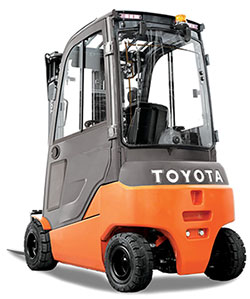HOW A NARROW AISLE FORKLIFT ADDS SPACE
As with most companies, you likely have a vision of growing stronger, expanding and gaining more customers. But if your warehouse space can't accommodate much growth, and you can't as yet afford a larger space, you may feel like your vision is thwarted by unfixable limitations. Consider this: even though you can't increase your overall warehouse size, you can increase your shelf space by narrowing your aisles. You're probably saying "My aisles wouldn't be able to accommodate a forklift if I narrowed them!" And you'd be right - about a standard forklift, but not about the Flexi forklift - the highly popular narrow aisle forklift now offered for sale, rent or lease by ACT, along with Flexi forklift parts.
The Flexi Forklift helps businesses to grow by allowing for the reduction of normal aisle width for sit-down counterbalanced forklifts, thereby providing 40-50% increase in product storage. The aisle for the Flexi forklift can be reduced down to seven feet, so while offering increased storage over normal sit-down forklifts, it also offers 20-25% increase over reach trucks.
The Flexi forklift is electric powered with easy to use controls and is equipped with only tier-one components for high quality and long-lasting durability. Operators enjoy excellent forward visibility thanks to its expertly designed lift mast. Because the automotive style seating position allows the driver to face forward when stacking a load, the mast moves into the operator's line of sight, offering unobstructed visibility of the forks and load. Additionally, it is designed with four lift cylinders and flexible mast tilt for easy fork entry into pallets offloaded from vehicles, as well as higher stacking capability. As for driving performance, the narrower ‘true radius’ design of the Flexi forklift allows for unguided, yet safe, full-travel speeds. That's why the Flexi is often called the very-narrow-aisle forklift. Finally, Flexi's lack of need for ‘reach legs’ eliminates wasted space above the ground floor load and the first rack beam level, which alone improves storage capacity by a minimum of 5%. It also eliminates the cost of steel guide rails or an inductive wire guidance system, often required in very narrow lateral stacking situations.

